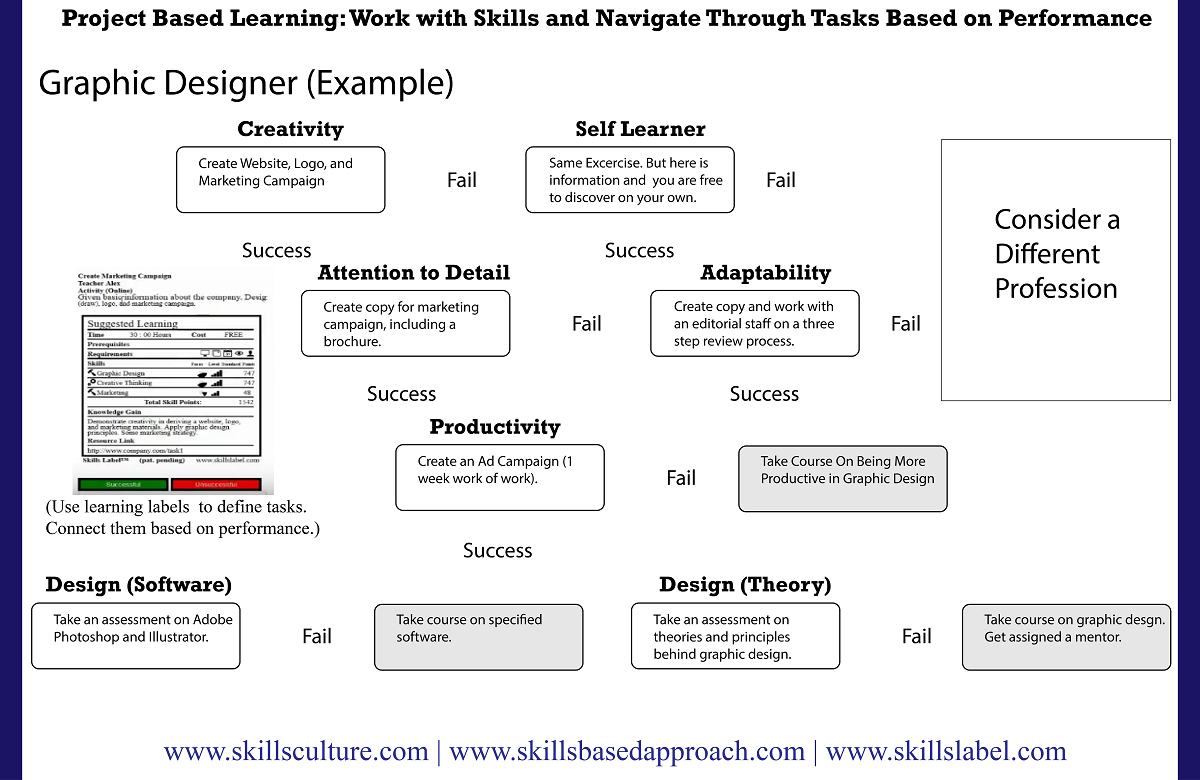I have been working on the Skills Based Approach methodology for a few years now. The application is a platform to manage learning in tasks.
Recently, there has been a lot of discussion of project based learning (PBL). I started to think how project based learning might work with Skills Based Approach, and came up with a concept shown in the diagram above. Essentially, a series of tasks with a decision tree.
Two disclaimers: 1) decision tree could (and should) be more substantive than two options (yes or no); perhaps a scale with five options (1 – 5); 2) the tasking should be more personalized and adaptive.
In this example, a professional is an entry to mid-level graphic designer starting a new position with a company. From the view point of the company, the most important skill is creativity. Though a self-learner with attention to detail moves forward. A professional moves through tasks and depending on the result moves along the tree.
There are two exit points (where the professional might consider mastering another skill): a professional who is not: creative or a self-learner; and attentive to detail or adaptable (able to receive feedback). In all other outcomes, a professional takes assessments and the company assigns (and invests) in ways to improve skills.
I have been working with graphic designers for about ten years now, and I have completed many of these tasks personally. The interpretation is grounded for this highly competitive, creative discipline.
My understanding of project based learning is to invest in a student or professional for a long term, maybe two years or more. This involves identifying specific goals and outcomes and working to achieve them over an extended period of time. A decision tree is an effective way to work through planning and building skills (two of the stages of Skills Based Approach).
There should be an exit strategy (as shown in the example), and “room to groom” (extra time to learn required skills). Overall, a competency based learning (CBL) program is ideal; basing results on reaching desired skill competencies (rather than seat time) saves on time and expense. Also, with CBL, a participant who faces an exit pivots into something else based on demonstrated skills.
Skills Based Approach is effective because students and professionals work with an evolving skill set by constantly cycling through four stages.
